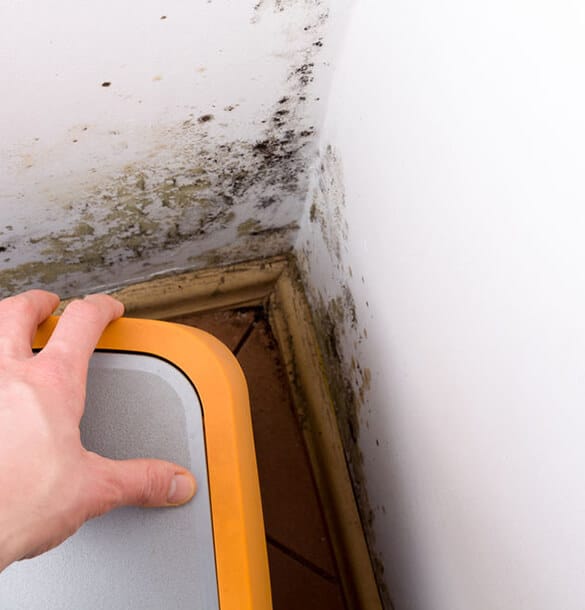Necessary Steps After Mold Remediation
Necessary Steps After Mold Remediation
Blog Article
Your Ultimate Overview to Post Mold Remediation Techniques
Navigating the world of post-mold removal techniques is a meticulous process that requires attention to detail and an extensive understanding of the complexities involved. In the consequences of mold and mildew invasion, recognizing just how to successfully eradicate the mold and mildew and prevent its reoccurrence is paramount for preserving a healthy and balanced interior environment. From choosing the ideal cleansing and sanitizing approaches to executing methods for lasting mold and mildew avoidance, each step in the removal journey plays a vital duty in ensuring a successful outcome. As we begin on this expedition of post-mold removal techniques, we will uncover the key approaches and best techniques that can help you recover your space to its pre-mold problem and guard it versus future mold dangers.
Comprehending Post-Mold Remediation Process
After finishing the mold removal procedure, it is critical to understand the post-mold removal methods that are necessary to guarantee a efficient and complete clean-up. As soon as the mold has been removed, the next step entails cleansing and disinfecting the influenced locations to stop any kind of regrowth of mold and mildew. This consists of utilizing specialized cleansing agents to clean down surfaces and eliminate any continuing to be mold spores. It is necessary to dry out the location completely to inhibit the development of mold in the future (Post Remediation verification). Proper air flow and dehumidification can aid in this process.
Furthermore, conducting a last examination post-remediation is important to make sure that all mold has been effectively gotten rid of. This inspection needs to include an extensive visual check in addition to perhaps air sampling to validate the absence of mold and mildew spores in the air. Added remediation may be essential if the assessment exposes any kind of sticking around mold. Informing passengers on preventative measures such as managing wetness degrees and immediately attending to any water leakages can help maintain a mold-free atmosphere.
Effective Cleaning Up and Decontaminating Methods

Preventing Future Mold Development

Value of Proper Air Flow
Proper ventilation plays a crucial function in avoiding wetness buildup, a key factor in mold development within indoor environments. Effective air flow systems aid eliminate excess humidity from the air, lowering the opportunities of mold and mildew spores locating the wetness they need to sprout and spread. Without appropriate ventilation, interior spaces can come to be a breeding ground for mold, leading to prospective wellness threats and architectural damage.
By making certain proper air circulation, air flow systems can additionally help in drying moist locations faster after water damage or flooding events, additionally preventing mold and mildew growth. Post remediation mold testing near me. In spaces like restrooms, attic rooms, kitchens, and cellars where dampness degrees often tend to be higher, mounting and preserving efficient ventilation systems is essential in avoiding mold problems

Monitoring and Maintenance Tips
Offered the important role that appropriate air flow plays in stopping mold growth, it is crucial to develop effective tracking and upkeep suggestions to ensure the ongoing performance of air flow systems. Tracking moisture degrees within the building is likewise critical, as high humidity can add to mold and mildew development. By staying attentive and positive to the problem of air flow systems, residential or commercial property owners can successfully minimize the risk of mold regrowth and maintain a healthy interior atmosphere.
Final Thought
In conclusion, post-mold remediation methods are crucial for making certain a clean and risk-free environment. Recognizing the process, applying effective cleansing and disinfecting methods, protecting against future mold and mildew development, preserving proper air flow, and normal tracking are all vital actions in the remediation procedure. By following these guidelines, you can effectively get rid of mold Post Mold remediation cleaning and stop its return, advertising a healthy living or working space for all owners.
In the consequences of mold problem, understanding how to successfully eliminate the mold and avoid its reoccurrence is critical for keeping a healthy interior environment. As soon as the mold and mildew has actually been removed, the next action includes cleaning and disinfecting the affected areas to protect against any type of regrowth of mold and mildew - what to do after mold remediation. After removing noticeable mold and mildew growth, it is vital to cleanse all surfaces in the affected area to get rid of any kind of staying mold and mildew spores. To better improve mold and mildew avoidance steps, it is necessary to deal with underlying issues that at first led to mold and mildew growth.Offered the vital function that appropriate air flow plays in avoiding mold and mildew development, it is important to establish efficient surveillance and maintenance ideas to ensure the continued functionality of air flow systems
Report this page